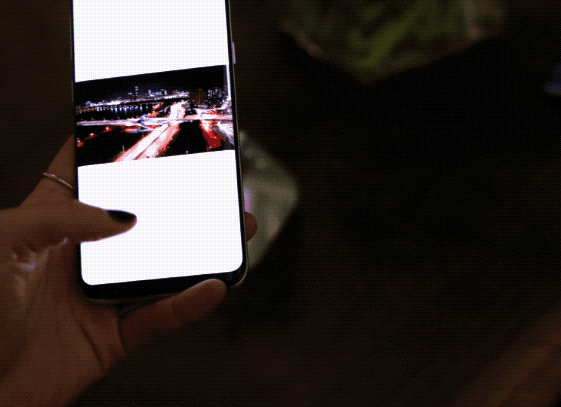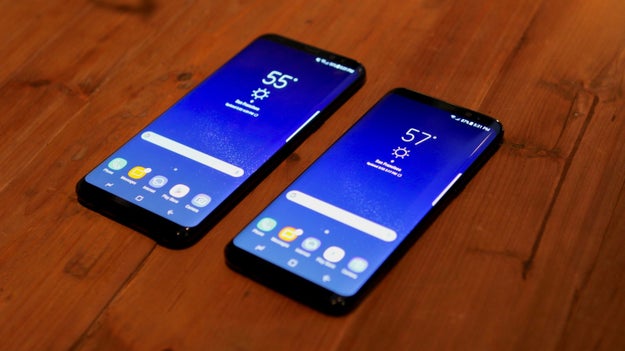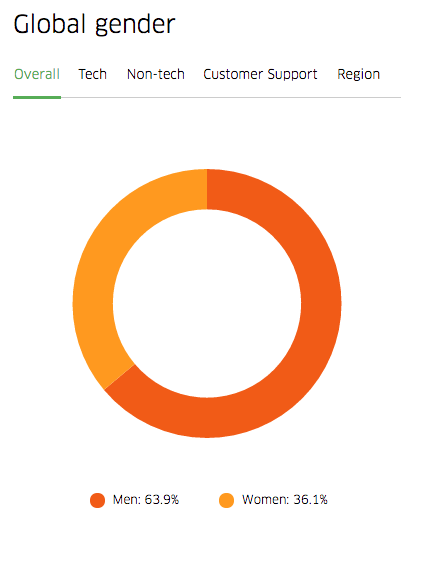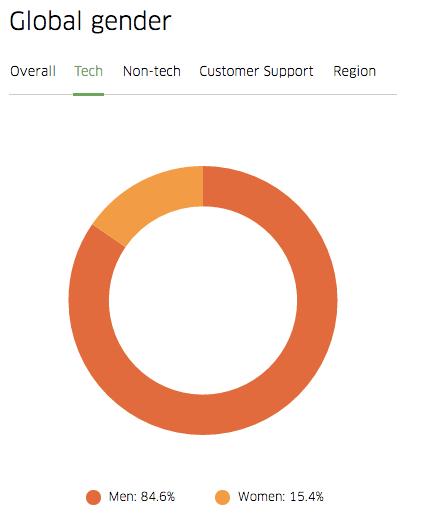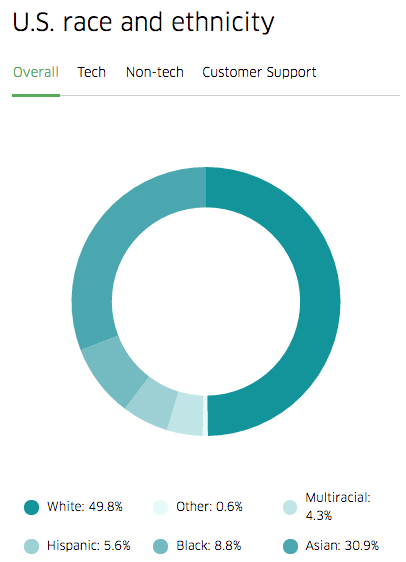
Lee Stranahan / Via youtube.com
Following Trump administration Press Secretary Sean Spicer's pledge to establish a White House press corps with voices “outside of Washington”, a number of unabashedly Trump-friendly news outlets have made the pilgrimage to the west wing briefing room — the symbolic heart of the establishment. Their goal: to bring their anti-elite, pro-Trump, and occasionally trollish brand of coverage to the White House.
For some of these self-described “real news” outlets and personalities, landing a seat in the White House briefing room is vindication of their often sensational and semi-factual 2016 presidential campaign stories which some believe undermined the candidacy of Hillary Clinton and helped propel Trump to the Oval Office. For others, it’s a chance to ask questions the mainstream media won’t touch. And for many, there’s a singular benefit worth the trip to Washington alone: the exposure that comes from seeing and being seen on the highest rated show on daytime TV.
“The briefing room has become a piece of pop culture for this generation and the people who followed the election every day on TV and are now glued to the day-to-day,” one newer White House correspondent told BuzzFeed News. For the reporter, being in the room brings with it the intoxicating proposition of asking a question that could set news cycle for the day — or the week. “And so it&039;s definitely an opportunity for far-right, crazy blogosphere types to make a name for themselves. It’s that way for anyone new but definitely true for the far-right guys. Everyone’s watching.”
“It&039;s definitely an opportunity for far-right, crazy blogosphere types to make a name for themselves.”
For Jim Hoft and Lucian Wintrich of the far-right blog Gateway Pundit, a short time in the briefing room has generated enormous returns. Hoft, Gateway Pundit’s founder, announced Wintrich’s White House correspondent position at ‘The Deploraball’ the night before Trump was sworn in as president. Since then, the 28- year old Wintrich has been the focus of dozens of articles (one by this writer), the star of a documentary film, and last week, the subject of a lengthy New Yorker profile. Earlier this month, he was the alleged victim of an altercation inside the briefing room involving Fox Radio’s John Decker, who, according to Wintrich and a few observers, openly chastised Gateway Pundit as a racist, xenophobic outlet. The incident — the details of which are disputed by both parties — was partially witnessed and tweeted by the well-followed members of the White House press corps, written up in a variety of publications, and outrage-shared across the pro-Trump internet, casting Wintrich among the far-right as the heroically aggrieved party, just trying to do his job.
But Wintrich has yet to ask a question of Spicer. Instead, he’s opted to “feel out the room” and “learn the protocols” before jumping in. “If you see pictures of me on Twitter in the briefing room. I’m literally squeezed in the corner taking notes,” he told BuzzFeed News.
The daily briefing spectacle has caught the eye of non-Washington types like New Right blogger and Twitter personality, Mike Cernovich, who lives in California. “It&039;s so good for your brand to be in the room now because it still seems like this prestigious place,” he told BuzzFeed News. “That&039;s why the press corps is losing it — White House access is a major status thing and now it feels like everyone&039;s able to do it.”.
While Spicer’s briefings may appear more open to the media’s fringes, the truth is, the briefing has never been overly exclusive. Day passes for a trip to the press room require little more effort than submitting some personal information to the White House (caveat: full-time “hard passes” are much harder to obtain). Cernovich said he has tentative plans to try and drop by a briefing sometime in April. Last week on Twitter he asked his followers, “should I get a White House pass?” (again, it doesn’t quite work that way, but the sentiment suggests he wants to show up). Responses ranged from “Light eradicates darkness. DO IT!” to “I think we should revoke CNN&039;s and give it to you.”
The conspiracy and pro-Trump news site Infowars has deftly injected itself into the Beltway news cycle multiple times without even stepping into the briefing room. In February, Infowars’ founder Alex Jones posted a video falsely claiming he’d secured White House press credentials from the Trump administration. Jones subsequently walked back that claim, explaining he’d simply taken initial steps to secure credentials. Then, in late January, Jones hired former World Net Daily writer and fellow conspiracy theorist, Jerome Corsi to head up an Infowars Washington bureau. In early February, Corsi tweeted that the White House had told him it “didn’t think there would be any problem in Infowars and Alex Jones and me getting press credentials.”
Two weeks ago, Lauren Southern, a controversial far-right Canadian media personality, made her way to DC to attend a White House briefing, where she tweeted a selfie with the caption, “Independent media takeover.” The tweet ricocheted around the internet; for pro-Trumpers it was another win for the unsung voices of “new media.” Southern — known for her previous denunciations of both rape culture and popular feminism— showing up in the briefing room registered to some as alarming breach. A few hours after posting the selfie, Media Matters ran a story with the headline, “Meet Lauren Southern, The Latest “Alt-Right” Media Troll To Gain Access To The White House Press Briefing.” The story called Southern “just the latest of the fringe, sycophantic “alt-right” media personalities that the White House is letting into its press briefings.”
Southern said she decided to show up in the room after Wintrich’s confrontation. “I heard there was hostility towards new media in the briefing room and wanted to see the experience for myself,” she told BuzzFeed News, adding that she intends to return “in order to ask questions the MSM won&039;t touch.”
The new prestige of the White House briefing room reverses decades of decline. For years the role of White House correspondent had gradually shifted from being central in journalism to one that many reporters dreaded as being captive to unresponsive, low level aides while big stories broke across the internet and elsewhere. As such, tensions over briefing room access have flared in the early weeks of Trump’s presidency. A number of reporters for mainstream outlets have voiced public concerns on Twitter over Spicer and President Trump’s penchant for calling on conservative media outlets during press conferences.
This month, after a reporter for the Heritage Foundation’s Daily Signal served as the press pool reporter for a Vice Presidential event, the Washington Post’s Paul Farhi questioned partisanship’s role in the White House press corps in an article headlined, “What’s a legitimate news outlet? A new face in the White House press pool raises questions.” And in a recent New Yorker article, White House correspondents and camera crew from legacy news outlets were quoted sniping at the new publications that have popped up in the briefing room. In one instance a radio correspondent was overheard bemoaning that, “at best, they don’t know what they’re doing…at worst, you wonder whether someone is actually feeding them softball questions.”
The prickly reception given to White House briefing room newcomers isn’t exactly unprecedented. At his first press conference in 2009, President Obama’s decision to call on The Huffington Post’s Sam Stein prompted a mini news cycle of its own. In 2009, Time Magazine described Obama’s decision as such: “the whole White House media shop, has crossed a Rubicon of sorts, acknowledging the equivalent legitimacy of an unapologetically unobjective media outlet, which lives nowhere but the Internet and which didn&039;t even exist four years ago”
At the time, New York Times White House reporter, Peter Baker called the decision to add partisan-leaning blogs to the press corps “troubling,” arguing that “We’re blurring the line between news and punditry even further and opening ourselves to legitimate questions among readers about where the White House press corps gets its information.” It’s a position Baker still appears to hold today; this month he told the told The Daily Signal that the issue has only grown murkier. “It becomes harder to draw lines now and say this organization is acceptable and this one is not,” he wrote.
Multiple self-professed members of pro-Trump outlets told BuzzFeed News their welcome to the room by more established outlets was less than friendly — “there’s a palpable tension there,” Wintrich told BuzzFeed News. While two other White House correspondents said allegations of a freeze-out were “overblown.” The discrepancy likely results from the spectrum of conservative outlets and reporters in the Trump press room. While some, like Wintrich and Gateway Pundit delight in trolling, plenty of reporters from right-leaning new media outlets try to play it straight and push the administration on claims like wiretapping and Russian interference in the election. “Plenty of those guys come from conservative outlets but still show up everyday ready to do the hard work like everyone else,” one White House correspondent said.
“They&039;re playing right into our fucking hands — it&039;s ridiculous.”
Regardless, the perceived tension and occasional hand-wringing from mainstream media is having the — perhaps unintended — consequence of elevating the profiles of the new faces in the room. The trolls, in essence, have been fed.
“They&039;re playing right into our fucking hands — it&039;s ridiculous,” Wintrich said describing the reaction to the briefing room altercation a few weeks ago. “So many members of conservative media after this happened reached out all supportive and told me how unfair the situation was. That&039;s street cred for me.” For Southern, the reaction from places like Media Matters is what will keep her coming back to the press room. “I literally just stood there and this was their reaction? I look forward to seeing the collective meltdown when I actually get a question in,” she said.
“I think members of the media are doing a disservice to themselves by putting so much attention on people who don&039;t report each day from the White House and use the briefing to bring attention to themselves,” one White House reporter said. “The Gateway Pundit situation was an ordeal and all but at the end of the day I don&039;t know I’ve ever read anything by [Wintrich]. So why not just ignore it?” In Southern’s case, Cernovich agrees. “They&039;re so triggered by the presence of people like Wintrich that they made him into an overnight sensation. He got the mainstream media to troll themselves.”
Quelle: <a href="Pro-Trump Media Has A New Obsession: The White House Briefing Room“>BuzzFeed
